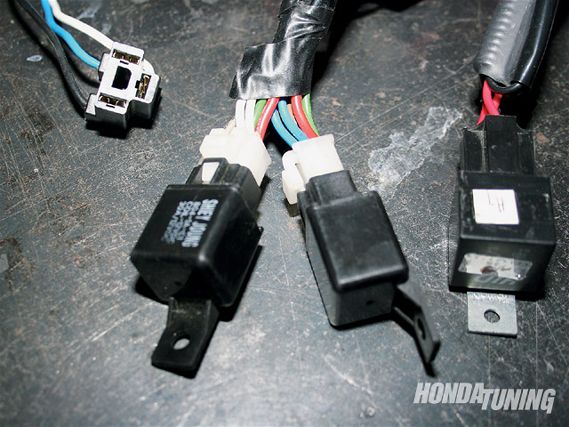 | HID Headlights - Bonafide Tech Tips
| HID Headlights - Bonafide Tech Tips
Rely On The Relay
Brighter headlights are never a bad idea. Today, many newer cars are equipped with halogen lights but few of those can compare to the luminosity of HID (high intensity discharge) headlamps. And there are a lot of them out there. Such high-wattage HID bulbs can draw far more current than the stock headlamps do, which isn't always safe when considering the OEM headlamp wiring harness and connectors. The additional current can heat up the smaller wiring and potentially melt the connectors, resulting in a dangerous or, at the very least, annoying situation. Before shopping for and installing a set of HIDs, it's important to first understand that they create more heat than what your car's used to.
HID is a type of lighting technology that replaces the conventional light bulb filament with Xenon gas. The gas is ignited to produce an arc of light when high voltage is applied. The quality of light that Xenon HIDs emit is closer to that of natural daylight than anything else. HIDs produce more light but with less energy than your conventional headlight bulbs but more than three times that of halogen bulbs. Most Xenon HID kits are sold with ballasts, which include a transformer and an igniter unit that plugs into the stock headlight wiring harness. The ballasts are made to step down and withstand the damage-inducing heat produced by the HIDs.
Although many HID kits generate less energy and current than conventional bulbs, they can still overload the system once fog lights and other lighting accessories are added. This is when wires melt and connectors burn. The solution lies with the relay. Relays are basically electrical switches made of electromagnets and contacts that open and close via another electrical circuit. Relays let small amounts of current trigger much higher amounts. Think of them as electrical amplifiers for your car. This means that your car's small headlight wires can act as nothing more than trigger wires for the larger HID-designated wires that'll carry the brunt of the load and are sourced directly from the car's 12-volt power source. And your car already has several of them. OEMs use them in the engine compartment and underneath the dash to control things like fuel pumps and A/C systems. There are several relay configurations used today, including three-, four-, five-, and six-pin, single- or dual-toggle switches.
T J Autosport, manufacturer of aftermarket HID kits, supplied us with our headlight and fog light setup for Project Fit along with a pre-made relay harness. Such kits include all of the necessary wiring and connectors for a trouble-free install and are ready to go right out of the box. Order yours at: www.hidonlinestore.com and don't forget the relay.
